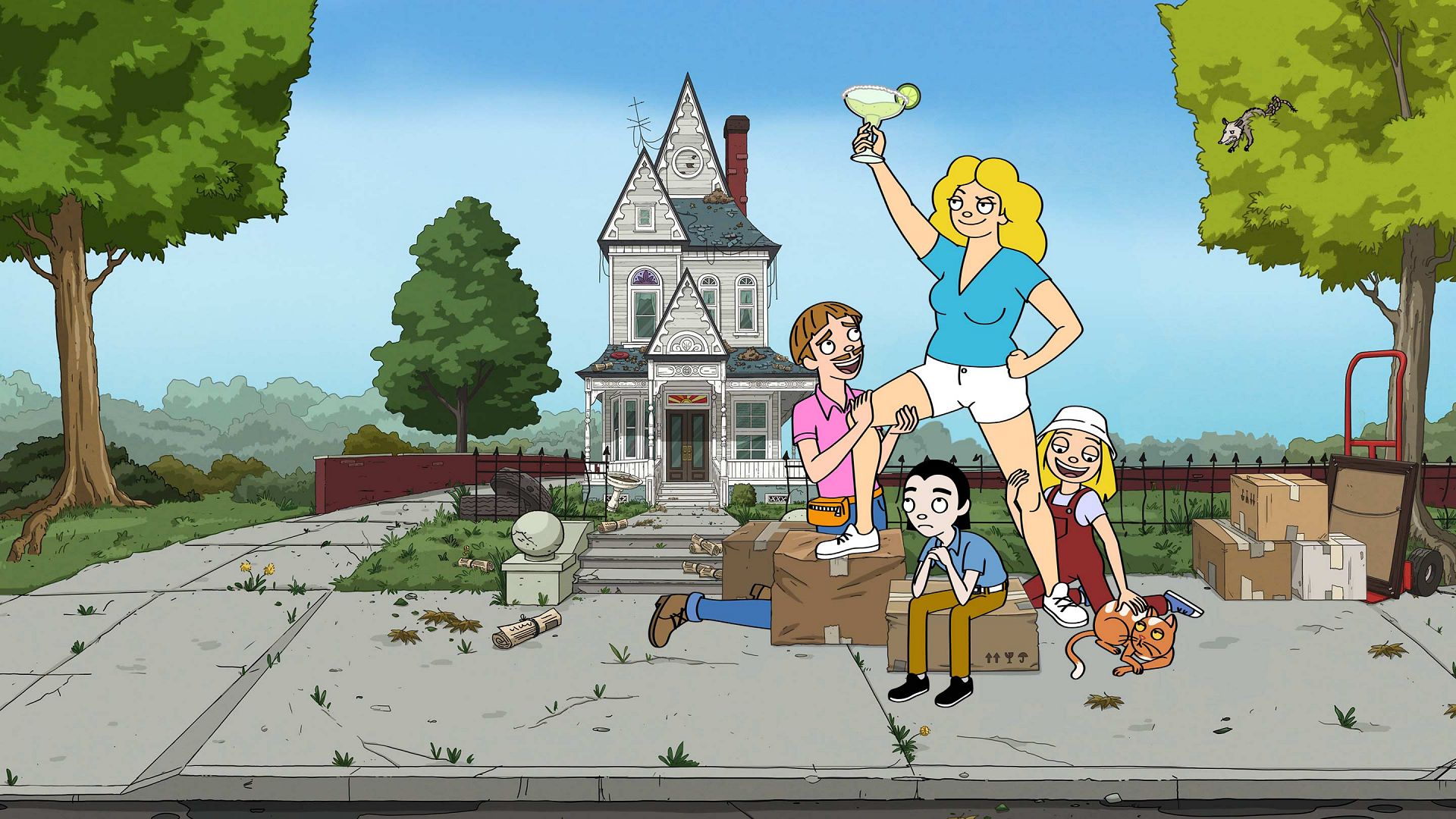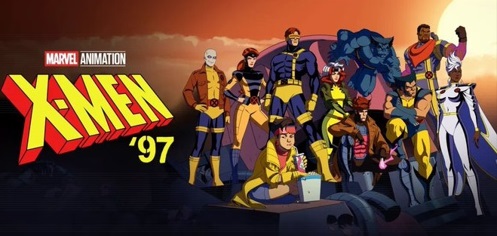Season Review: The Harper House Season One (First Five Episodes)
Overview:
Sometimes family is a pain, but they can also be all that people have sometimes. Every family is different and full of their own unique traditions, but it’s time that television prepares themselves for the Harper family. The Harpers find their comfortable lives thrown for a loop when they’re forced to relocate from the rich side of River Creek, Arkansas to not just the poor part of town, but to take up residence in an archaic Victorian home. The headstrong Debbie (Rhea Seehorn) embraces these changes while her passive husband, Freddie (Jason Lee), and their two children, Ollie (Tatiana Maslany) and Todd (Ryan Flynn), roll with the punches and prepare to be as much of a sideshow as the new Harper House that they inhabit.
Our Take:
One of the most foundational and popular forms of television series are family sitcoms. They’ve been around since the start of the medium and it’s a genre that’s become especially prevalent in animation due to series’ ability to freeze their precocious characters as children for as long as they want. Animated family sitcoms haven’t gone anywhere, but the general evolution of television has allowed these types of programs to become much more iconoclastic and subversive.
Animated series like Bob’s Burgers, F is For Family, or even Solar Opposites prove that these types of family-focused series can effectively balance sweet values that apply to audiences of all ages, while still embracing an off-kilter agenda that allows the animated series to break form and get experimental. Brad Neely is a brilliant mind who’s responsible for some extremely weird content like Adult Swim’s China, Il and Brad Neely’s Harg Nallin’ Sclopio Peepio, but Paramount+’s The Harper House features Neely’s twisted take on the prototypical American family. It’s both his most mainstream creation, yet also bursting with his trademark absurdity and biting criticism of culture’s curiosities.
The Harper family look incredibly normal upon an initial glance, but these first five episodes do excellent work to establish each of them as individuals and accentuate the quirks that make these characters stand out among the standard animated sitcom family flock. There’s a frantic, misfit energy that drives the Harper family forward, which is often most evident in the family’s fearless matriarch, Debbie. Rhea Seehorn really throws herself into this role and what she brings to the table has a lot to do with Debbie’s success. It feels like Seehorn is jumping in the recording booth as she delivers her lines, most of which carry a sweetly vindictive energy as she cackles her way through scenes.
Debbie’s flailing antics to succeed and support her family are entertaining, but there’s something powerful about the idea of an engineer mom who wants to engineer and fix what’s broken in her life in order to feel like she’s gained control, only that she can’t. Debbie often looks to insert herself into whatever she can and fix problems that aren’t even there. She tries to exude non-stop confidence as a role model even when everything is burning down around her. Debbie’s indestructible energy and optimism is a lot like the Harper House itself, which looks austere on the outside, but has a crumbling interior. At one point Debbie proudly announces, “We’re the Harpers and we do shit for real,” which feels like the series’ mission statement in a nutshell.
Freddie’s softer attitude is the perfect foil for Debbie’s aggressive energy and The Harper House figures out how to have this type of cloying character come across as lovable rather than irritating. Freddie’s free time and uselessness naturally pushes him down a series of increasingly ridiculous schemes, which often provides him with the right variety of energy, especially when he’s oblivious towards the nonsensical nature of it all. The Harper House also features a distinct lack of boundaries between its parents and children, which results in some fantastic interactions that aren’t common in most comedies of this nature.
Ollie and Todd could be an easy area for The Harper House to run into problems, but the series manages to portray them as weird, unique children, but not in the standard way that’s seen in animated series. They feel real and outside of the standard sitcom molds and stereotypes where they can come across as funny and unusual, but without trying too hard. The entire Harper family pops, but Todd’s entitled and disaffected suave energy is a consistent delight and he’s an early standout in these first five episodes, especially when he’s outside of his family. Todd’s growing journey to accept his family’s recent plummet down the social ladder and figure out who he is within this new context is actually moving. The Harper House treats this with real weight rather than just using it for comedy. These episodes really look at the toll that this move takes on Todd, which is enlightening, honest character development.
The Harper family may be strange, but what’s crucial about this series is that as weird or as jaded as it gets, there’s still real heart in each episode. There are reminders of how much this odd family loves each other, which always sticks the landing and comes across as so sweet. It’s what turns this show from something enjoyable into something special. The wrestling scene at the end of the pilot is a beautiful example of how despite having so little, the Harpers are rich in love. It’s incredibly easy to fall for these characters, root for them, and want to spend more time with them on adventures.
The Harper House’s episodes after the pilot get much crazier and take larger risks. The first episode, “The Harper House,” faces the hurdle of needing to dispense the most setup and exposition, but the episode still feels in line with the rest of the season’s episodes. Typical family sitcom scenarios like parenting techniques, job stress, and school are all put under the microscope. However, The Harper House doesn’t squander its “upstairs/downstairs” economic aspect of the community. There’s a careful commentary on gentrification, albeit from the outside perspective of the Harpers. There’s a lot of power in this perspective where it can feel timely, but not derivative of similar content.
These initial episodes break down ideas like the dangers of “friend-stacking” and negotiating social dynamics in a new arena, as well as white guilt, and the efficiency of “dumb girl” behavior. At the same time, some installments engage in “margarita vigilantes” and it’s not afraid to key into some heavy weirdness. Episodes of The Harper House often have a bifurcated nature, but both separate plots compliment each other and reflect a common theme between characters.
These first five episodes of The Harper House establish the main characters well, but they also spread the wealth and explore the different pockets of community in River Creek. A strong supporting cast develops that gives the series a lot of ammunition when it comes to its background characters. Already, Ollie and Todd’s classmates, the Harpers’ neighbors, and Debbie’s extended family already feel fleshed out.
Aesthetically, The Harper House doesn’t break new ground, but it still showcases slick animation courtesy of Titmouse. There’s a detailed, lively style to the character models that meshes with Neely’s past works and keeps his style intact. The Harper House has a very casual look to it, but it at least doesn’t fall into the cookie cutter mold that’s present in so many other animated shows right now. Oddly, The Harper House feels quite restrained when it comes to music, which is typically a major component to Neely’s work. There’s some really pleasant instrumental work here, but it’s not full of Neely’s usual earworms.
The Harper House is a magic trick of a television show where it lulls the audience in with its unassuming nature, only to slowly bombard them with brilliant madness. At times it can feel like a lot of Neely’s trademark weirdness gets relegated to the corner of frames and the background of scenes, which almost makes it come across as more aggressive when it’s actually stumbled upon. It’s a nice way of reflecting the mundane nature of River Creek, Arkansas, yet still reflects the strangeness that’s present underneath it all. The Harper House is a thoroughly impressive animated series from Brad Neely that will hopefully get the opportunity to further develop and that the Harper family will have many more opportunities for their lovable eccentricities to rub off on their neighbors.
The first three episodes of ‘The Harper House’ premiere September 16th, on Paramount+, with new episodes dropping weekly

























I'm hired!